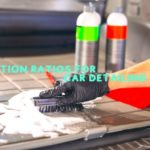Have you ever heard “Jakes brakes“? When it comes to driving, safety is of utmost importance. One crucial aspect of safe driving is understanding and effectively using a vehicle’s braking system.
This article will delve into the world of “Jakes Brakes,” also known as engine brakes, compression release brakes, or Jacobs brakes. We’ll explore what they are, how they work, their benefits, and when to use them.
So, fasten your seatbelts as we embark on this journey of enhancing your driving knowledge.
Table of Contents
What is Jake Brake?
Jakes Brakes, also known as Jake Brake or engine brakes, are a type of compression release engine brakes used in large vehicles to assist in controlling their speed while descending steep grades or when needing to slow down without relying solely on traditional braking methods.
How Does Jake Brake Work?
Principles of Engine Braking
Engine braking is a technique used to slow down a vehicle by using the engine’s own resistance to compression. In a typical internal combustion engine, when the throttle is released, the engine’s pistons continue to move up and down in the cylinders due to the engine’s inertia. This movement generates compression, as the air-fuel mixture is compressed in the cylinders even though no fuel is injected or ignited.
During normal engine operation, the energy produced during the power stroke helps to propel the vehicle forward. However, when engine braking is applied, the engine’s intake and exhaust valves, along with other components, are manipulated to release the compressed air in the cylinders, turning the engine into an air compressor. This compression release creates a retarding force, effectively slowing down the vehicle.
Components of Jakes Brakes
Jakes Brakes utilize various components to achieve compression release and engine retardation. These components include:
- Engine Valves: Jakes Brakes utilize the engine’s intake and exhaust valves to control the airflow in the cylinders. Opening these valves at specific times during the engine’s compression stroke releases compressed air from the cylinders, creating the braking effect.
- Compression Release Mechanism: This mechanism is responsible for actuating the engine valves at the appropriate times to release the compressed air. It is usually activated hydraulically or electronically based on the vehicle’s control systems.
- Control Systems: Modern Jakes Brakes are integrated with the vehicle’s control systems. These systems monitor various parameters like vehicle speed, brake pedal position, engine RPM, and more to determine when engine braking is necessary. The control systems then activate the compression release mechanism accordingly, ensuring optimal engine retardation.
The Science Behind Engine Retardation
Engine retardation is achieved by converting the moving vehicle’s kinetic energy into compression energy within the engine. As the engine’s cylinders release the compressed air, this energy is converted into heat, dissipating through the engine’s cooling system.
By using engine braking, the vehicle’s traditional friction brakes experience less wear and tear, reducing the risk of brake fade and enhancing overall braking efficiency. Also, engine braking can be more effective and reliable, especially when descending long, steep grades, as it helps prevent brake overheating and potential brake failure.
It’s important to note that Jakes Brakes are primarily found in diesel engines commonly used in commercial trucks and other large vehicles. They offer an essential safety feature, particularly when driving in challenging terrains or adverse weather conditions, contributing to better control and stability during deceleration.
Advantages of Using Jakes Brakes
Using Jakes Brakes, also known as engine brakes or compression release engine brakes, provides several advantages, each contributing to improved vehicle performance, safety, and environmental considerations:
Improved Braking Performance
Jake Brakes offer an additional source of braking power to complement the traditional friction brakes. When activated, the engine’s compression release mechanism generates significant resistance within the engine, effectively slowing down the vehicle. This added braking force helps reduce the stopping distance and enhances overall braking performance, especially when dealing with heavy loads or challenging road conditions.
Reduced Wear and Tear on Traditional Brakes
One of the primary benefits of Jakes Brakes is the reduction of wear and tear on the vehicle’s traditional friction brakes. By utilizing engine braking in appropriate situations, the reliance on traditional brakes is reduced, leading to less friction and heat generation in the brake pads and rotors. As a result, the traditional brake components last longer, leading to reduced maintenance costs and more extended replacement intervals.
Enhanced Safety on Steep Slopes and Downhill Descents
On steep slopes and downhill descents, vehicles can gain excessive speed, making it challenging to control using just the traditional brakes. Jake Brakes come to the rescue by providing supplementary braking power. The compression release mechanism slows down the engine’s RPM and effectively retards the vehicle’s speed. This enhanced control ensures safer descents, prevents brake overheating, and reduces the risk of accidents due to brake fade.
Impact on Fuel Efficiency and Emissions
Engine braking can have a positive impact on fuel efficiency and emissions. When drivers utilize engine braking appropriately, they can reduce the need for constant acceleration and deceleration, which can waste fuel. Fuel consumption is minimized by relying on engine braking during downhill descents or deceleration, leading to potential fuel savings, especially in large vehicles with heavy loads.
Besides, engine braking can contribute to lower emissions. The reduced use of traditional brakes means fewer brake dust particles are released into the air, which can be beneficial for air quality. Moreover, with smoother deceleration and reduced stress on the engine, combustion efficiency may improve, resulting in slightly reduced exhaust emissions.
However, it’s important to note that while jakes brakes offer these advantages, they must be used judiciously and responsibly. Excessive engine braking can lead to noise pollution and, in some cases, may cause damage to the engine or other components if used inappropriately.
Best Practices for Using Jakes Brakes
Using Jake Brakes effectively and safely requires an understanding of when and how to apply them. Here are some best practices for using jakes brakes:
When to Use Engine Braking:
In what circumstances should you use the engine brake? Here is a short summary:
- Downhill Descents: Engine braking is most beneficial when descending steep slopes or hills. It helps control the vehicle’s speed and prevents excessive wear on traditional brakes due to constant braking.
- Approaching Intersections: When approaching intersections or stops, engine braking can assist in slowing down the vehicle gradually, reducing the reliance on friction brakes and promoting smoother driving.
- Slowing Down on Slippery Surfaces: Engine braking can be advantageous on slippery surfaces, like wet or icy roads, as it helps maintain better traction by avoiding sudden braking that might cause skidding.
Common Mistakes While Using Engine Braking
Here are some common mistakes when using jakes brakes:
Excessive Engine Braking
Avoid using Jake Brakes excessively or for prolonged periods, especially at high RPMs. This can cause overheating and potential damage to the engine or exhaust system.
Using Jake Brakes in Low Gears at High Speeds

Using engine braking in low gears at high speeds can strain the engine and transmission excessively. Always shift to an appropriate gear for engine braking depending on your speed and road conditions.
Not Coordinating with Traditional Brakes
While Jakes Brakes are valuable, they should not replace traditional brakes entirely. Coordinate engine braking with the use of friction brakes to optimize stopping power and reduce wear on both systems.
Tips for Maximizing the Efficiency of Jakes Brakes:
- Anticipate Road Conditions: Look ahead for downhill sections or upcoming stops. Anticipating road conditions allows you to use engine braking more proactively, ensuring a smoother and safer driving experience.
- Gradual Application: Apply engine braking gradually and smoothly. Abrupt or aggressive engine braking can be unsettling for passengers and other drivers on the road.
- Use the Right Gear: Choose an appropriate gear for engine braking. In most cases, lower gears provide more engine braking effect, but upshift as the vehicle slows down to prevent excessive RPM.
- Monitor RPM and Engine Temperature: Keep an eye on the engine’s RPM and temperature while using Jake Brakes. Avoid redlining the engine and make sure it doesn’t overheat during extended downhill descents.
- Be Mindful of Noise Pollution: In urban or residential areas, where noise pollution regulations may apply, use engine braking judiciously to minimize excessive noise.
Jakes Brakes Regulations and Legalities
Jakes brakes regulations and legalities vary from one region to another and may also have international implications. Let’s explore the main aspects of jakes brakes regulations:
Laws Related to Using Jake Brakes
Many jurisdictions have specific laws and regulations governing the use of engine brakes. These laws are often in place to address noise pollution concerns, safety issues, and potential damage to roadways. Common regulations include:
- Prohibited Zones: Some areas, particularly urban or residential zones, may have specific restrictions on the use of engine brakes due to noise concerns. Signs indicating “Engine Brake Prohibited” or similar warnings are usually posted in these zones.
- Highway Restrictions: Some highways or portions of highways might restrict engine brake use due to potential hazards, especially in areas with high traffic density or close proximity to residential areas.
- Nighttime Restrictions: Certain areas may impose restrictions on using engine brakes to minimize noise disturbance during quiet hours.
- Fine and Penalties: Violating engine brake regulations may result in fines or penalties, depending on the severity of the offense and local laws.
It’s essential for drivers to be aware of and comply with these regulations to avoid legal issues and ensure a positive driving experience for everyone.
Noise Regulations and Jakes Brakes
Engine brakes can generate significant noise, which can be a concern for residents living near roads. To comply with noise regulations and minimize noise pollution, drivers can take the following measures:
- Observe Prohibited Zones: Pay attention to posted signs indicating engine brake restrictions, and avoid using Jakes Brakes in these areas.
- Use Mufflers: Ensure that the engine’s exhaust system, including the mufflers, is well-maintained and functioning correctly. Properly functioning mufflers can help reduce noise levels during engine braking.
- Use Engine Braking Judiciously: Employ engine braking only when necessary, such as when descending steep slopes, and use traditional brakes in quieter areas or when engine braking is not required.
Regional Differences Regarding Jake Brake
Regulations regarding Jakes Brakes can differ significantly between regions and countries. Some areas may have strict prohibitions on engine brake use, while others might have more relaxed rules.
For example, according to New York Vehicle and Traffic Law Section 375(32-a), engine braking is prohibited in areas with posted signs indicating “Use of Engine Retarder Prohibited” or similar wording. These signs are usually found in urban or residential zones where excessive noise from engine braking can disturb residents and create noise pollution.
Meanwhile, in Colorado, some sections of highways have posted signs indicating “Engine Brake Restriction” or similar warnings. These restrictions are typically in place on downhill sections with steep grades, where engine braking may be limited or prohibited to address safety concerns and reduce the risk of accidents.
Check out this video to see how Jake Brakes sound!
Jakes Brakes vs. Traditional Friction Brakes
Jakes brakes and traditional friction brakes are two distinct braking systems with different operating principles and characteristics. Let’s compare them:
Operating Principle
- Jakes Brakes: Jakes brakes, also known as engine brakes or compression release engine brakes, work by utilizing the engine’s compression to slow down the vehicle. When activated, the engine’s valves open at specific times during the compression stroke, releasing the compressed air in the cylinders and creating a retarding force that slows down the vehicle.
- Traditional Friction Brakes: The friction brakes apply pressure on the brake pads against the brake rotors or drums. The friction generated between the pads and rotors converts the moving vehicle’s kinetic energy into heat, effectively slowing it down.
Braking Performance
- Jakes Brakes: Jakes brakes provide a supplementary braking force, particularly in scenarios like descending steep grades or long downhill descents. They can significantly assist in controlling the vehicle’s speed and reducing the load on traditional friction brakes during such situations.
- Traditional Friction Brakes: Traditional friction brakes are the primary braking system used in most vehicles. They offer strong and immediate braking performance, allowing the driver to stop the vehicle quickly and efficiently in various driving conditions.
Noise
- Jakes Brakes: With jakes brakes, engine braking can be noisier than traditional friction brakes, particularly at higher RPMs. This noise can be a concern in noise-sensitive areas and may be subject to local regulations.
- Traditional Friction Brakes: Friction brakes generally produce less noise compared to engine brakes, making them more suitable for use in urban or residential zones.
Maintenance
- Jakes Brakes: Jakes brakes require regular maintenance to ensure proper functioning of the compression release mechanism and other related components. Failure to maintain them properly can lead to engine damage or reduced braking efficiency.
- Traditional Friction Brakes: Traditional friction brakes also require periodic maintenance, including brake pad and rotor replacement, brake fluid checks, and caliper inspections. However, they are generally simpler and easier to maintain compared to engine brakes.
Heat Generation
- Jakes Brakes: Engine braking with jakes brakes does not generate as much heat as traditional friction brakes, which can be beneficial during prolonged downhill descents to avoid brake fade.
- Traditional Friction Brakes: Traditional friction brakes generate significant heat during braking, and excessive use can lead to brake fade, reducing braking performance.
Cost
- Jakes Brakes: Installing jakes brakes on a vehicle can be more expensive than traditional friction brakes due to the additional components and installation requirements.
- Traditional Friction Brakes: Traditional friction brakes are commonly used in most vehicles and are generally more affordable to install and maintain.
Here is the summary table:
| Aspect | Jakes Brakes | Traditional Friction Brakes |
| Operating Principle | Utilizes engine compression release to slow down the vehicle | Applies friction on brakes to generate braking force |
| Braking Performance | Supplementary braking force for specific scenarios | Primary braking system for most driving conditions |
| Noise | Can be noisier, especially at higher RPMs | Generally produces less noise |
| Maintenance | Requires regular maintenance and proper functioning of compression release mechanism | Requires periodic maintenance of brake pads, rotors, calipers, and brake fluid |
| Heat Generation | Generates less heat during braking | Generates significant heat during braking, can lead to brake fade |
| Cost | More expensive to install and maintain compared to traditional friction brakes | Generally more affordable to install and maintain |
Frequently Asked Questions

Is the Jake Brake illegal?
The legality of Jakes Brakes, also known as engine brakes, varies depending on the region and local regulations. In some areas, there might be restrictions on using engine brakes due to noise concerns, especially in urban or residential zones. It’s essential for drivers to be aware of and comply with the specific regulations in their location to avoid legal issues.
Are jakes brakes suitable for all types of vehicles?
Jakes brakes are primarily found in diesel engines and are commonly used in large vehicles like commercial trucks and buses. They are not typically found in gasoline-powered vehicles. While they are suitable and commonly used in certain types of vehicles, they might not be compatible with all engine types and configurations.
Can using jakes brakes damage the engine?
Jake Brakes should not damage the engine when used responsibly and in appropriate situations. However, improper or excessive use of engine braking can lead to engine strain and overheating, potentially causing damage to engine components. Proper maintenance and adhering to recommended usage guidelines are essential to prevent engine damage.
Do engine brakes affect fuel economy?
When used in specific situations like downhill descents, engine braking can contribute to improved fuel economy as it reduces the need for constant acceleration and deceleration. Fuel consumption can be minimized by relying on engine braking during downhill driving, especially in larger vehicles with heavy loads.
How noisy are Jakes Brakes?
Jake Brakes can be noisier compared to traditional friction brakes, especially at higher RPMs. The noise level can vary depending on the engine type, exhaust system, and the presence of mufflers or other noise-reducing components. In noise-sensitive areas, engine brake noise can be a concern, and local regulations may impose restrictions.
Are there any legal restrictions on using engine brakes?
Yes, there are legal restrictions on using engine brakes in many areas. Some regions prohibit engine brake usage in specific zones to address noise pollution concerns. Signs indicating “Engine Brake Prohibited” or similar wording may be posted in these areas. Additionally, some highways may have restrictions on engine brake use to promote safety.
Can jakes brakes replace traditional braking systems entirely?
No, Jakes Brakes cannot replace traditional braking systems entirely. While they provide supplementary braking force and reduce wear on friction brakes in specific scenarios, traditional friction brakes remain the primary and essential braking system in all vehicles.
Why are jake brakes so noisy?
Jake brakes are noisy due to the rapid release of compressed air from the engine cylinders during the compression release process. The quick valve action and high RPMs contribute to the characteristic popping or snapping sound.
Also, the absence of mufflers in some setups can make the noise more noticeable. Proper and considerate use of engine braking is essential to minimize noise pollution and comply with local regulations.
How much does it cost to install Jakes Brakes?
The cost of installing Jakes Brakes can vary based on the vehicle type, make, and model, as well as the complexity of the installation process. It is generally more expensive than installing traditional friction brakes, as it involves additional components and adjustments.
Can inexperienced drivers use Jakes Brakes effectively?
Inexperienced drivers can use Jakes Brakes effectively with proper training and guidance. Understanding when and how to apply engine braking is crucial to maximize its benefits and avoid potential risks. Novice drivers should seek guidance from experienced drivers or undergo training to use engine brakes safely and efficiently.
Further Reading:
New York Consolidated Laws, Vehicle and Traffic Law
Hi there! I’m Naomi O’Colman. I’ve got years of experience working at an auto repair shop here in Texas under my belt. On top of that, ever since I was a kid I’ve been passionate about the auto industry. Since I’ve joined the team at automotivegearz.com I’ve been enthusiastically sharing my passion and insights with my readers. I’m dedicated to delivering high quality content and helping you stay up to date with the latest automotive trends and products out there!







